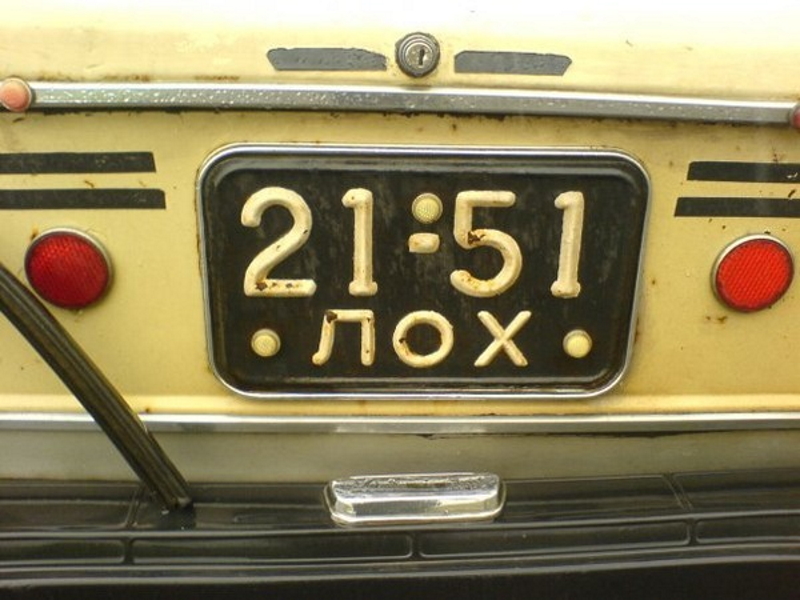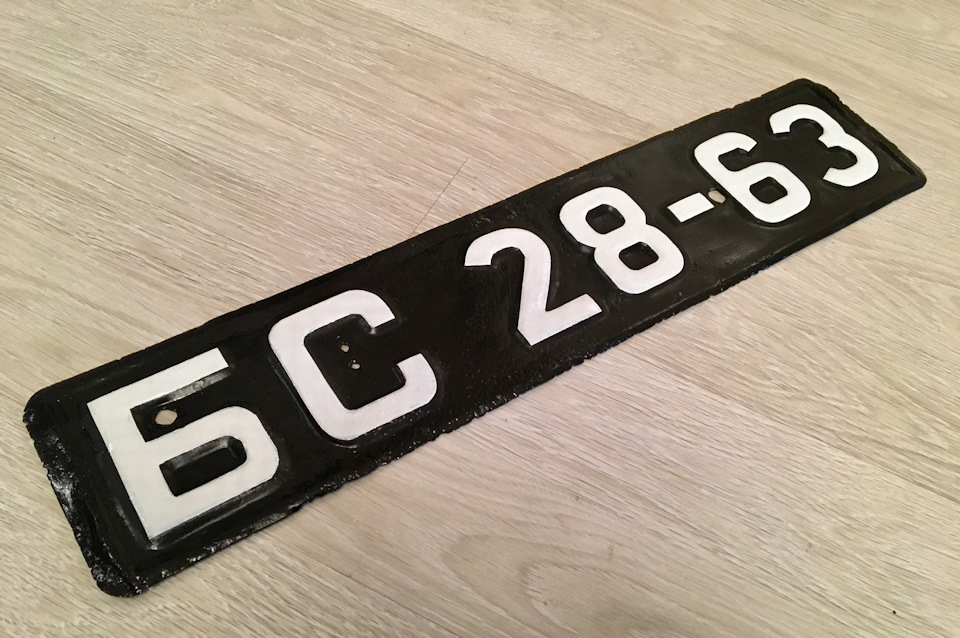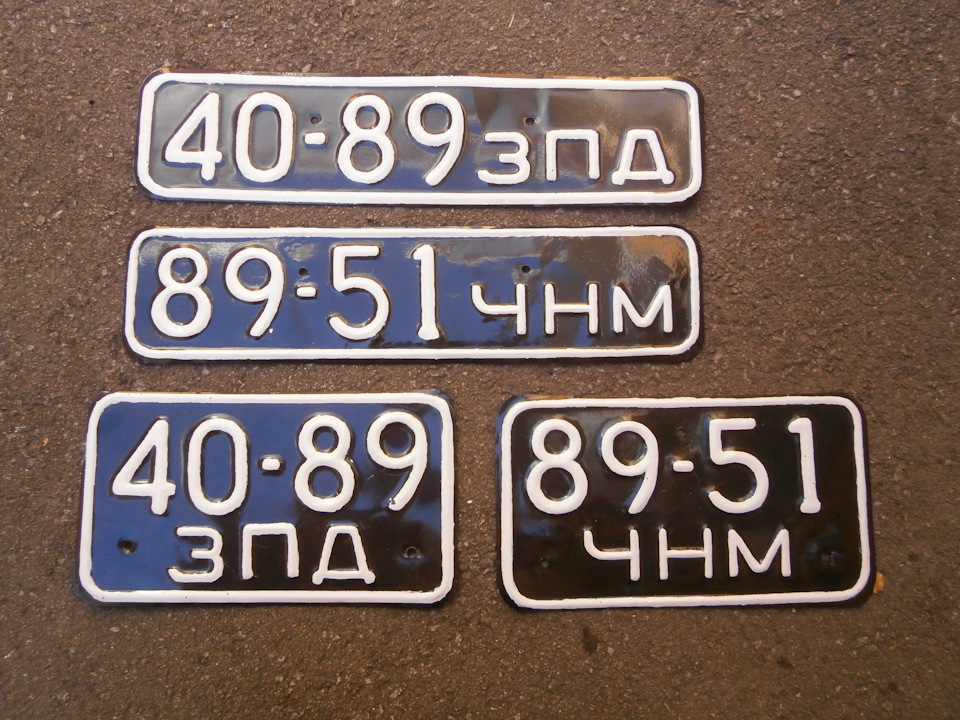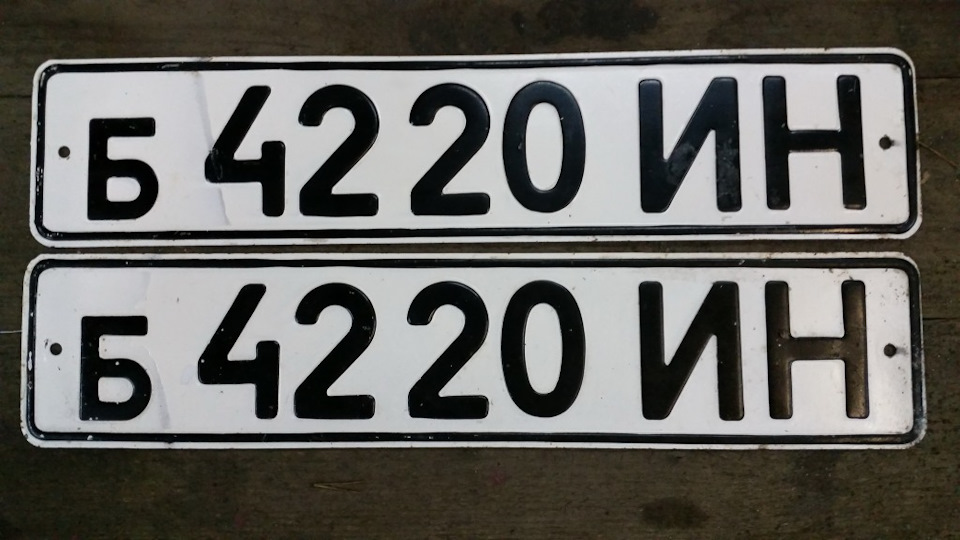
How Soviet car numbers looked and deciphered
Content
The main problem with the first numbers of USSR cars was that they did not indicate the region in which they were issued. Letter designations were issued alphabetically without any territorial reference.
Contrary to popular belief, vehicle registration in Russia began long before the revolution. But only in 1931 was a common standard for license plates for the USSR adopted. Let's see what the Soviet car numbers were like.
What did the numbers on the cars of the USSR look like?
The standard for car registration numbers in the USSR has changed throughout the history of the state.
In 1931 year
The industrial revolution in the Soviet Union led to the development of a single license plate. From the time of the Russian Empire to the 30s of the 20th century. the situation on the roads has not changed much, so the standards adopted under the emperor were used to designate vehicles. Each province had its own. Do not forget that at that time there were no equipped highways, and traveling by car between cities was very difficult - there was no need for a single system or territorial designations.
Everything changed in 1931. The first number of the USSR on a car looked like this - a rectangular white tin plate with black characters. There were five characters - one Cyrillic letter and two pairs of Arabic numerals, separated by a hyphen. The accommodation standard adopted then is familiar to everyone today. There should have been two identical plates, and they should have been attached to the front and rear bumpers of the car. On a motorcycle - on the front and rear fenders.

1931 license plates
Initially, such a standard was adopted only in Moscow, but already in 1932 it was extended to the whole country.
In the same year, "one-time" numbers were issued - they differed from the usual ones by the inscription "Test" and by the fact that instead of two, only one pair of numbers was stamped on them. Such signs were used for one-time trips.
In 1934 year
The main problem with the first numbers of USSR cars was that they did not indicate the region in which they were issued. Letter designations were issued alphabetically without any territorial reference.
The problem was solved very simply - the management did not develop systems of regional codes. Now, under the number itself on the plate, the name of the city was added, where the branch of Dortrans, which issued this sign, was located. In 1934 there were 45 such departments, later their number increased.
The number itself has also undergone changes - the letter in it has been changed to a number. According to the state standard, there should have been five numbers, but this rule was not observed everywhere.

USSR car number (1934)
The practice of trial numbers also did not go away - they were also brought under the new standard. There were options with the designation "Transit".
1936 standard
In 1936, another important event happened in the transport sphere of the life of the state - in July, the State Automobile Inspectorate was established by the Union of People's Commissars of the USSR. Since then, all actions with license plates have been transferred under its jurisdiction.
In the same year, the traffic police again changed the model of license plates for cars in the USSR. The plate itself became much larger, the field was black, and the symbols were white. By the way, the production standard of these numbers is still considered the most unfortunate. Roofing iron was used as a material, which could not withstand road loads, and the plates often broke.
This year, for the first time, a system of territorial designations was developed - now each region has its own letter code.

Car number sample 1936
The number itself was brought to this format: two letters (they indicated the region), a space and two pairs of numbers separated by a hyphen. This scheme was already observed much more strictly than the previous one, no deviations from the number of characters were allowed. The plate was produced in two versions. A single-row (rectangular) one was attached to the front bumper of the car, a two-row one (it was close to a square in shape) - to the rear.
During this period, it is worth noting the specifics of military numbers - they also had their own standard, but it was observed much less strictly than civilian ones. The number of characters on the license plate of a Red Army car could vary from four to six, they were distributed arbitrarily, and sometimes completely extraneous characters were added to the plate - for example, stars.
Autonomous plates of the USSR in 1946
After the war, it was easier for the state to reform license plates than to put the current accounting system in order. A huge amount of equipment was mobilized, and not all of it was re-registered according to the rules. The trophy cars that roamed the country in abundance also needed to be registered. The invaders, who re-registered cars according to their own rules, also brought their share of chaos.

1946 license plates
The new standard was announced in 1946. The traffic police retained the pre-war recording format in the form of two letters and four numbers (where the letters were deciphered as a region code), only the appearance of the sign itself has changed. His canvas became yellow and the letters black. The division into single-row and double-row also remains.
GOST 1959
In the post-war years, the level of motorization in the Union of Soviet Socialist Republics grew rapidly, and by the end of the 50s, two-letter-four-digit format numbers were not enough.
It was decided to add one more letter to the USSR car numbers. In addition, in 1959 the traffic police abandoned the yellow canvas of the sign - the appearance returned to the pre-war format. The plate itself turned black again, and the symbols turned white. Signs with two letters also remained in use, but now they could only be issued to military vehicles.

Autonomous plates of the USSR in 1959
Combinations quickly ended also because one number was not assigned to the car for life - it changed with each sale. At the same time, the concept of a transit number was introduced, which is more familiar to a modern person - such signs were made of paper and attached to the front and rear windows of the car.
A little later (in 1965) the yellow background for the numbers was transferred to agricultural machinery.
1981 numbers
The next reform took place after the Moscow Olympics, in 1980.
The new format of the rooms was already much more reminiscent of the modern one. As at the very beginning of the history of Soviet license plates on cars, the plate became white, and the symbols became black.

License plates of 1981
In fact, two standards were adopted that year at once - for private and official vehicles. But no significant changes followed. Only the appearance of Soviet car numbers and the order of writing characters on them have changed. The content remains the same - four numbers, three letters (two indicating the region, and one additional).
Sizes of license plates of the USSR
The size of license plates in the Soviet Union changed consistently with the adoption of each new standard, this was regulated by internal legislation.
However, during the reform of 1980, the traffic police had to take into account the international standards of license plates of European states. According to them, the size of the front sign was 465x112 mm, and the back one - 290x170 mm.
Deciphering Soviet car numbers
The old numbers of cars of the USSR, issued according to the first standards, did not have any systematics - both numbers and letters were issued in order.
In 1980, one variable letter was added to each two-letter combination, indicating the series to which the number belonged.
Region indices
The first letter of the index was usually the first letter of the region's name.
Just as now two or more codes can be used to designate each region, so in the USSR a region could have several indices. As a rule, an additional one was introduced when the combinations of the previous one were exhausted.

License plates of the times of the USSR in Leningrad and the region
So, for example, it happened with the Leningrad region - when all the options for numbers with the code "LO" were already in use, the index "LG" had to be introduced.
Is it possible to drive a car with Soviet numbers
In this case, the law is unambiguous and does not tolerate any ambiguous interpretations - only those cars that were once registered in the USSR, and since then have never changed owners, can have Soviet numbers. With any re-registration of a vehicle, its numbers will have to be handed over and updated according to the new state standard.
Of course, there are loopholes here too - for example, a Soviet car can be purchased under a general power of attorney, then it will not have to be re-registered, but in any case, the original owner must be alive.
Conclusion
The modern standard of state numbers was adopted in 1994 and is still in use. In 2018, it was supplemented by the release of square-shaped numbers - for example, for Japanese and American cars not intended for export. For the most part, the format of modern license plates was influenced by international standards, for example, the requirement for letters so that they can be read in both Cyrillic and Latin.
Russia and the Soviet Union have a long history of state accounting for transport. As time has shown, not all decisions were correct - for example, the manufacture of plates from the waste of roofing iron. The last Soviet issues are gradually leaving the roads - very soon they can only be seen in museums and private collections.
